9th & Broadway is an urban community of duplex rowhouses that occupy a long-vacant parcel in Sacramento’s Richmond Grove district. In the 1960s, the construction of the Interstate Highway permanently severed the area from the city’s older neighborhoods, leaving behind an urban limb with falling property values and a deteriorating social and economic fabric. After decades of disinvestment and neglect, Richmond Grove has recently been rediscovered as an affordable and demographically diverse community with easy access to downtown Sacramento.
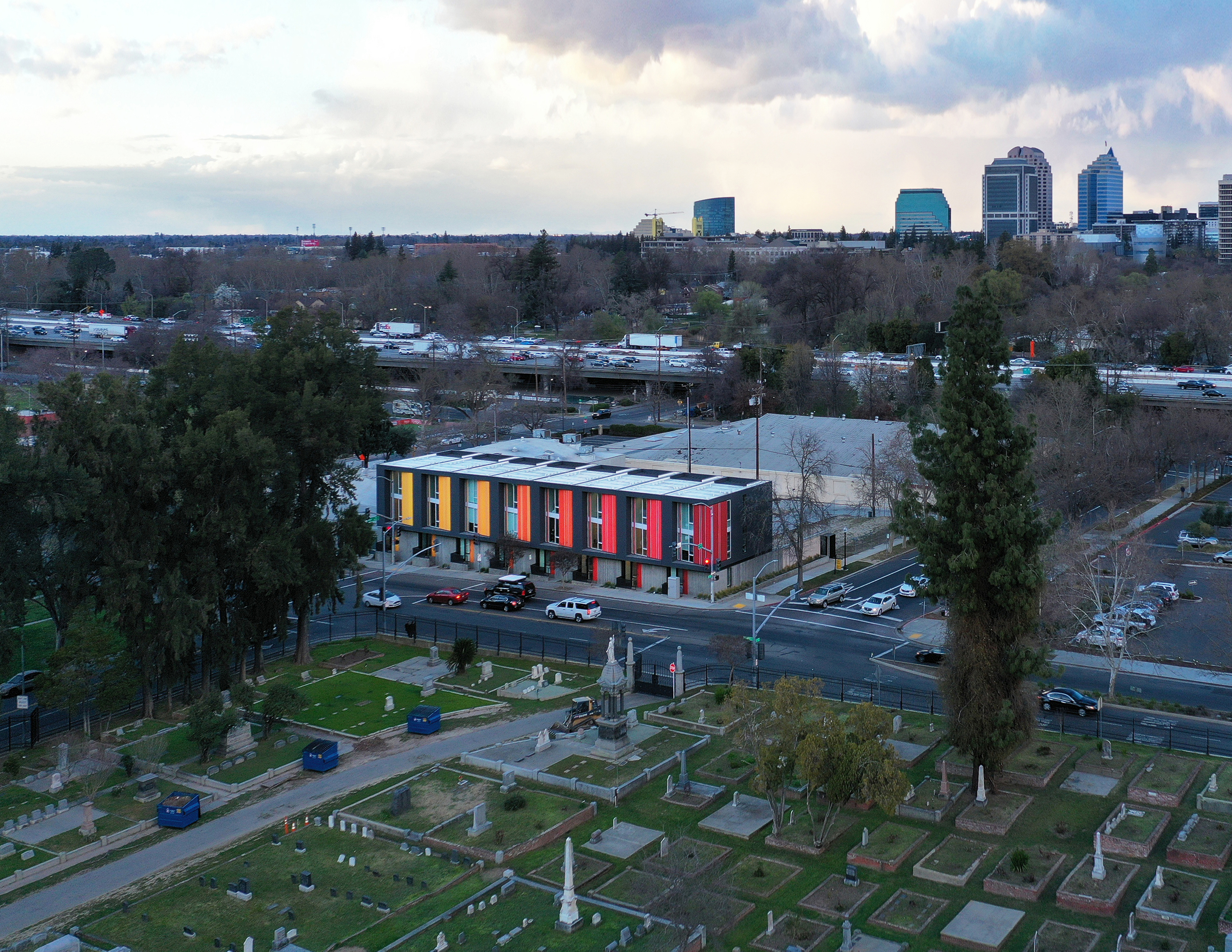
“There is a simplicity and clarity to it… I like the bold identity; it’s a beautiful project.”
Todd Hoehn (2023 Design Awards Juror)
The project groups eight side-by-side duplexes in a linear three-story building that repairs the urban street edge along Broadway, a busy thoroughfare connecting the city’s eastern neighborhoods with the Sacramento River. Each duplex offers two units: an adaptable micro-studio at street level, and a 2-bedroom apartment on the upper two floors. The two units within each duplex have their separate entrances to accommodate a variety of combined or separate living, rental, and ownership arrangements: depending on demand and programmatic needs, they can be occupied independently or combined into one larger dwelling. For example, the small street-level unit can be used as a self-sufficient studio apartment, be turned into a small commercial office with street access, serve as a granny flat for the dwelling above, or be combined with the upper apartment into one larger residence.
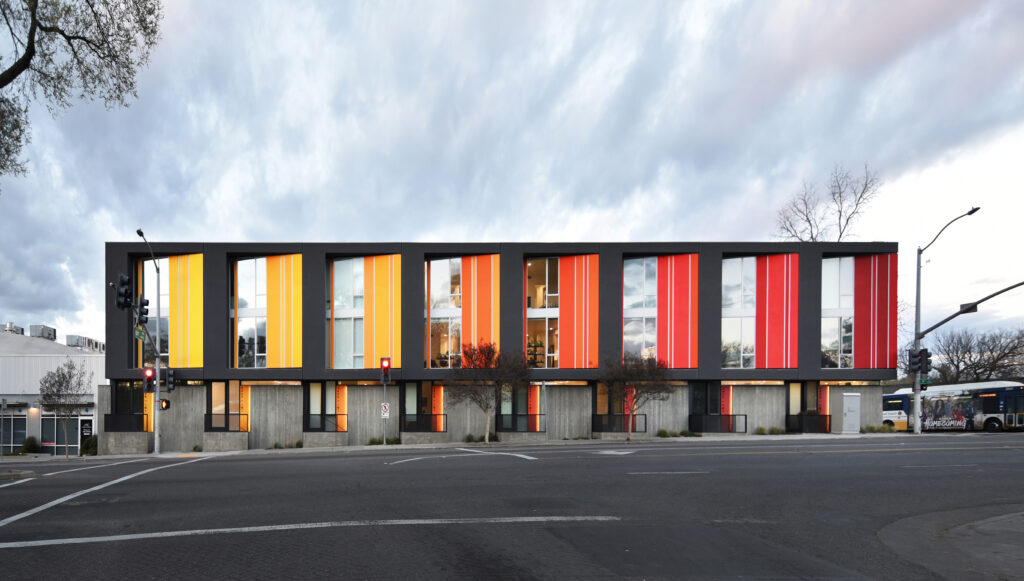
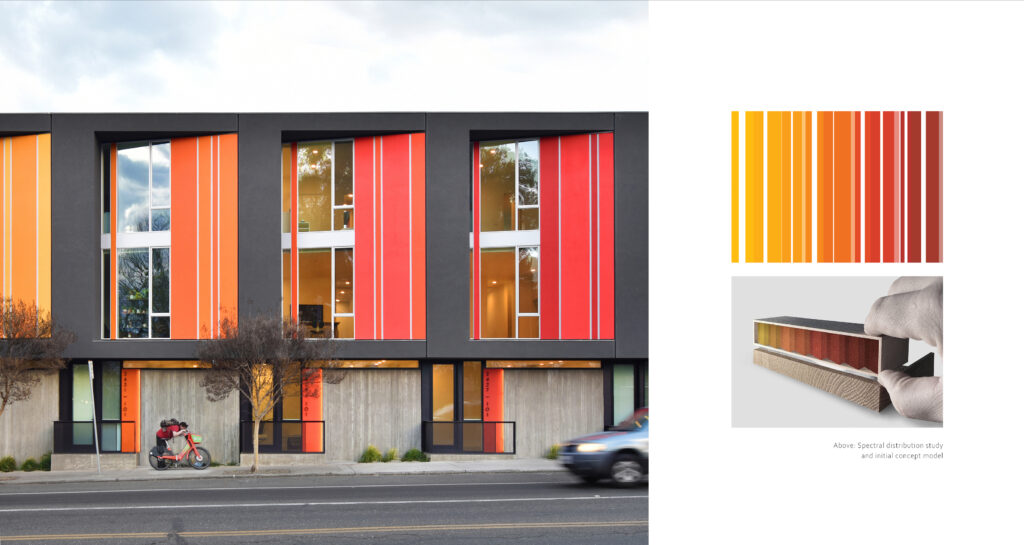
While the front doors of the micro-units open onto Broadway, the upper apartments are accessed from an expansive communal courtyard in the rear, a private outdoor space modeled after the Dutch concept of Woonerfs (“living courts”) that is shared by all residents. A pedestrian gateway on 9th Street leads residents and guests into the courtyard, where carefully delineated areas of drought-tolerant grass, gravel, and permeable pavers create a casual outdoor environment that invites children to play, neighbors to mingle, and vehicles and bikes to slowly traverse from the public mid-block alley to the building’s attached single-stall garages.
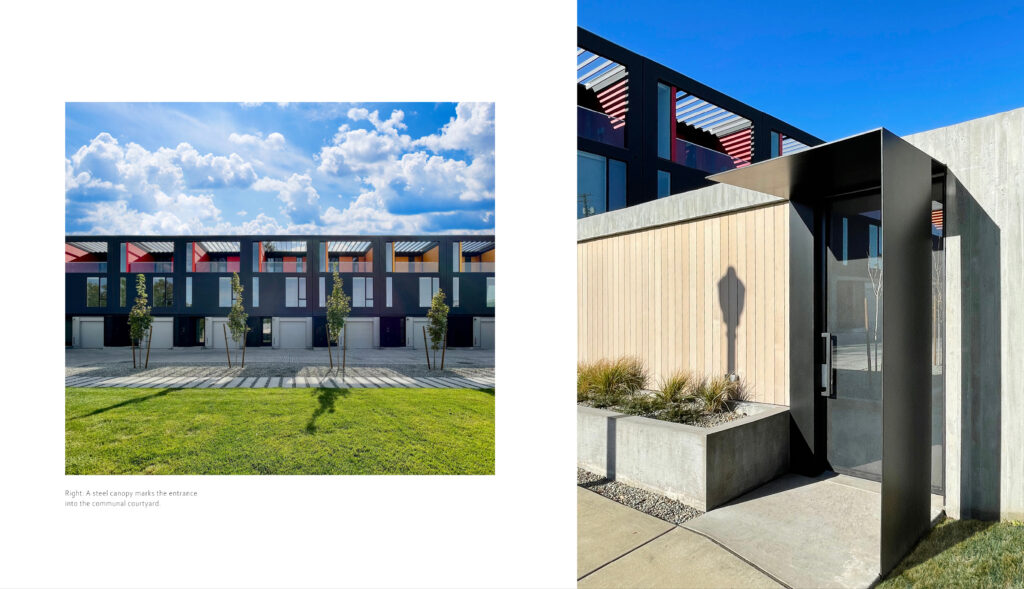
The building’s overall massing and volumetric articulation express the sequent rhythm of the side-by-side rowhouses and their binary program mix inside. The ground-floor micro-units occupy a slightly recessed, board-formed concrete plinth, with the upper apartments grouped in a two-story cantilevered volume above. The overhang of the upper volume provides shelter for the micro-units’ front stoops. A series of oblique, polychrome walls cut deep into the upper volume, marking the boundaries of each rowhouse and giving the overall façade a distinctive, subtly scalloped profile. In a playful nod to the famous Historic Rose Garden at the Old City Cemetery across the street, the angled walls are lined with multicolored panels, their hues following a chromatic sequence that gradually morphs from light orange at one end of the building to deep red on the other, giving each individual duplex its own color identity. The same colors reappear in the back of the building on the parti walls between the upper apartment’s roof terraces – private, trellised verandas that look out onto the communal courtyard and offer expansive views of a vibrant neighborhood in transition.
“The formal composition of everything worked very nicely, bringing a solid clarity to this project that was enjoyable and easy to understand.”
Jennifer Park, AIA (2023 Design Awards Juror)
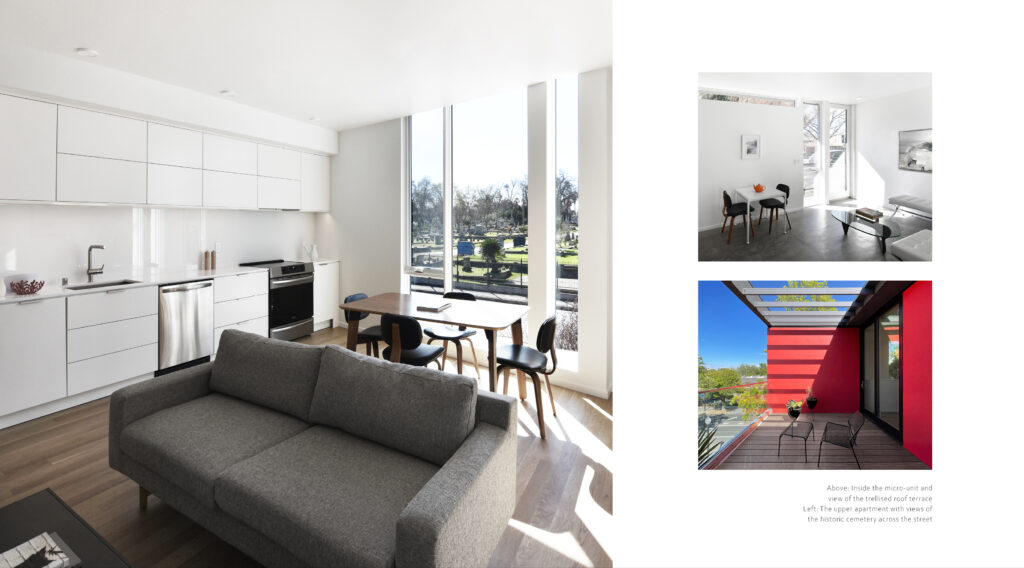


Leave a Reply